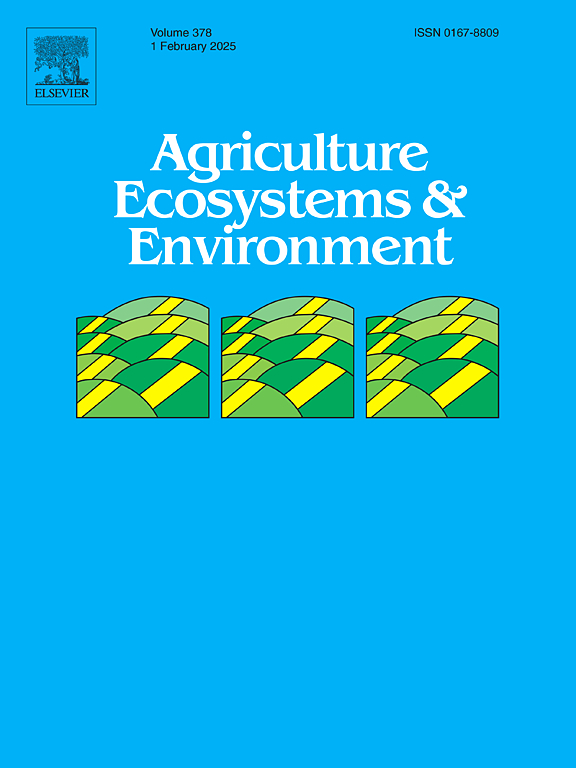Integrated anaerobic soil disinfestation and bio-organic fertilizers to alleviate continuous cropping obstacles: Improving soil health and changing bacterial communities
IF 6
1区 农林科学
Q1 AGRICULTURE, MULTIDISCIPLINARY
引用次数: 0
Abstract
Bacterial wilt, a soil-borne disease exacerbated by continuous cropping obstacles, poses a significant threat to tomato cultivation. Anaerobic soil disinfestation (ASD) and bio-organic fertilizers are widely employed in agricultural production due to their roles in disease suppression and soil health improvement. However, the comprehensive role and mechanism of these management strategies in remediating soil obstacle and controlling soilborne disease remain poorly understood. In this study, we simulated disturbance to the indigenous microbial community through ASD treatment, followed by the application of Bacillus subtilis and Trichoderma harzianum bio-organic fertilizers (BS and TH treatments) to restore soil microorganisms and improve soil health in a field experiment. The results showed that the combination of ASD and bio-organic fertilizers was more effective in reducing the abundance of Ralstonia solanacearum (R. solanacearum) in rhizosphere soil, lowering the incidence of tomato bacterial wilt, and increasing tomato yield compared to single ASD or bio-organic fertilizer treatments. The treatments of ASD+TH and ASD+BS significantly increased soil health index (SHI) by 31.9 % and 30.4 %, respectively. In addition, ASD+BS and ASD+TH treatments increased the abundance of B. subtilis and T. harzianum in rhizosphere soil, respectively, increased the the diversity and richness of bacterial communities, and reduced the negative correlation of bacterial communities in the co-occurrence network. Variation partitioning analysis and principal coordinate analysis revealed that ASD treatment was the primary driver of changes in bacterial community composition and structure. Microbial function prediction analysis showed that ASD combined with bio-organic fertilizers increased the relative abundance of carbohydrate metabolic pathways in the bacterial community, but decreased the relative abundance of plant pathogen function. Overall, the effective control of tomato bacterial wilt through combined ASD and bio-organic fertilizers may be attributed to the direct reduction of R. solanacearum, or to the improvement of soil health and the optimization of soil bacterial community.
求助全文
约1分钟内获得全文
求助全文
来源期刊

Agriculture, Ecosystems & Environment
环境科学-环境科学
CiteScore
11.70
自引率
9.10%
发文量
392
审稿时长
26 days
期刊介绍:
Agriculture, Ecosystems and Environment publishes scientific articles dealing with the interface between agroecosystems and the natural environment, specifically how agriculture influences the environment and how changes in that environment impact agroecosystems. Preference is given to papers from experimental and observational research at the field, system or landscape level, from studies that enhance our understanding of processes using data-based biophysical modelling, and papers that bridge scientific disciplines and integrate knowledge. All papers should be placed in an international or wide comparative context.
 求助内容:
求助内容: 应助结果提醒方式:
应助结果提醒方式:


